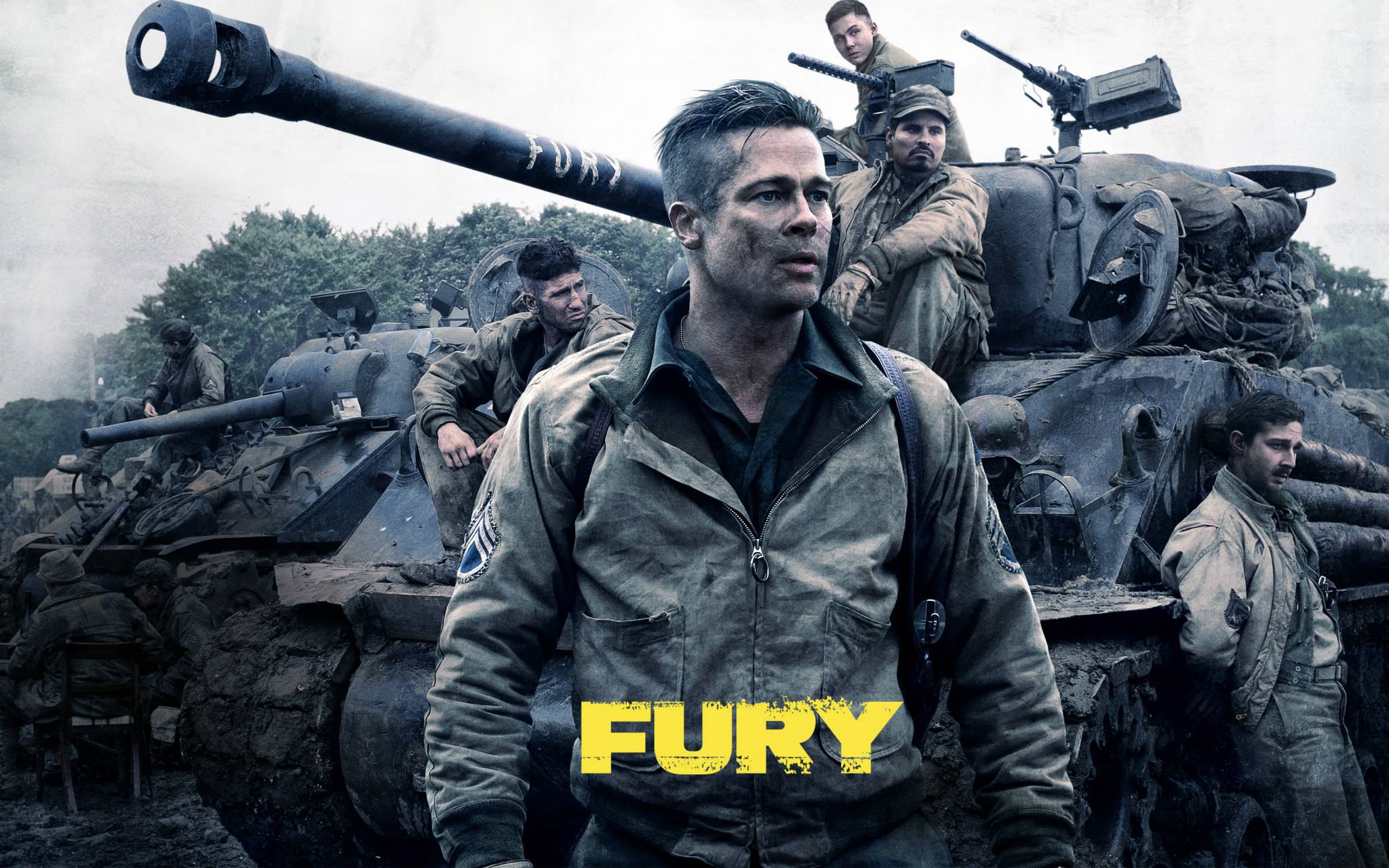Fury (2014)

“Fury,” directed by David Ayer and released in 2014, is a visceral war film that captures the brutal realities of combat during World War II. Set in the final days of the war in 1945, the film follows a group of American soldiers as they navigate the harrowing landscape of a war-torn Germany in a tank named “Fury.” With a powerful cast that includes Brad Pitt, Logan Lerman, Shia LaBeouf, Michael Peña, and Jon Bernthal, “Fury” is not just a tale of battle; it is a profound exploration of camaraderie, sacrifice, and the psychological toll of war.
The film opens with the character of Don “Wardaddy” Collier, portrayed by Brad Pitt, who commands the tank Fury. Wardaddy is a hardened sergeant with a wealth of combat experience, embodying the grit and determination required to survive the horrors of war. The opening scenes set a somber tone, showcasing the devastation wrought by the war and the toll it has taken on both the land and its people. The audience is immediately thrust into the chaos of battle, experiencing the relentless pressure and fear faced by soldiers on the front lines.
As the story unfolds, we meet the rest of the crew of Fury: Boyd “Bible” Swan (Shia LaBeouf), Grady “Coon-Ass” Travis (Jon Bernthal), and Trini “Gordo” Garcia (Michael Peña). Each character brings a unique perspective to the narrative, contributing to the film’s exploration of brotherhood and the shared burdens of war. The chemistry among the cast is palpable, reflecting the deep bonds formed through shared experiences in combat. Their interactions, often laced with humor and camaraderie, provide moments of levity amidst the overwhelming darkness of their reality.
The arrival of a new recruit, Norman Ellison (Logan Lerman), marks a significant turning point in the film. A young soldier who has just joined the crew, Norman is inexperienced and naive, representing the innocence that is often lost in the chaos of war. His character serves as a vessel for the audience’s own journey, allowing viewers to witness the horrors of battle through fresh eyes. As he grapples with the brutality of his new reality, the dynamic within the tank crew shifts, leading to both conflict and growth.
One of the film’s strengths lies in its unflinching portrayal of the moral complexities of war. Ayer does not shy away from depicting the harsh choices that soldiers must make, often placing them in situations where they must weigh their humanity against the instinct for survival. The tension between duty and morality is palpable, particularly in scenes where the crew is faced with the devastating consequences of their actions. The film forces the audience to confront the darker aspects of war, challenging romanticized notions of heroism.
The action sequences in “Fury” are intense and meticulously crafted, showcasing the chaos and destruction of tank warfare. The cinematography captures the claustrophobic environment of the tank while also illustrating the vastness of the battleground. Ayer’s direction brings a raw energy to the combat scenes, immersing viewers in the adrenaline-fueled chaos of battle. The sound design, combined with the visual effects, enhances the sense of realism, making the audience feel as though they are right there in the midst of the fight.

Throughout the film, the bond among the tank crew deepens, revealing the emotional scars that each soldier carries. Wardaddy emerges as a mentor figure to Norman, imparting harsh lessons about survival and the cost of war. The relationship between the two characters is central to the film, illustrating the mentor-student dynamic that often develops in the trenches of battle. Pitt’s performance is particularly compelling, balancing toughness with vulnerability as he navigates his responsibilities to both his men and the mission.

As the crew faces increasingly perilous situations, they are forced to confront their own fears and insecurities. The climax of the film is a harrowing sequence that showcases both the physical and psychological toll of war. In a desperate stand against overwhelming odds, the crew must come together to fight for their lives and for each other. This pivotal moment encapsulates the film’s themes of sacrifice and loyalty, emphasizing the lengths to which soldiers will go to protect their comrades.

The film also addresses the impact of war on civilians, particularly in scenes depicting the aftermath of battles in German towns. Ayer’s portrayal of the consequences of war is both poignant and unsettling, reminding viewers that conflict extends beyond the battlefield. The film’s nuanced depiction of the human cost of war serves as a powerful commentary on the far-reaching effects of violence and destruction.
In the aftermath of the climactic battle, the film concludes with a bittersweet resolution that emphasizes the enduring bonds of brotherhood forged in the crucible of war. The characters are irrevocably changed, carrying the scars of their experiences with them. “Fury” ultimately serves as a tribute to the resilience of the human spirit and the profound connections that can arise in the face of adversity.

In summary, “Fury” is a gripping war film that transcends the genre through its exploration of brotherhood, sacrifice, and the moral complexities of conflict. Directed by David Ayer, the film combines intense action with deeply emotional character development, anchored by standout performances from its talented cast. With its unflinching portrayal of the horrors of war and the enduring bonds forged in battle, “Fury” remains a powerful and thought-provoking cinematic experience that resonates with audiences long after the credits roll. Through its vivid storytelling and profound themes, the film serves as a poignant reminder of the sacrifices made by those who serve in times of war.
Suggested videos for you:
Suggested videos for you: